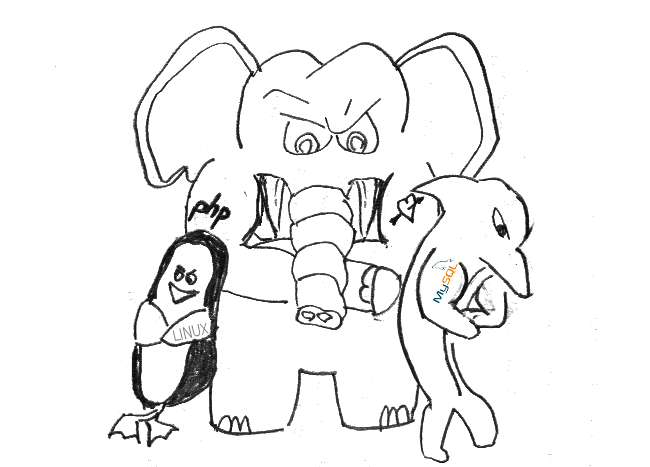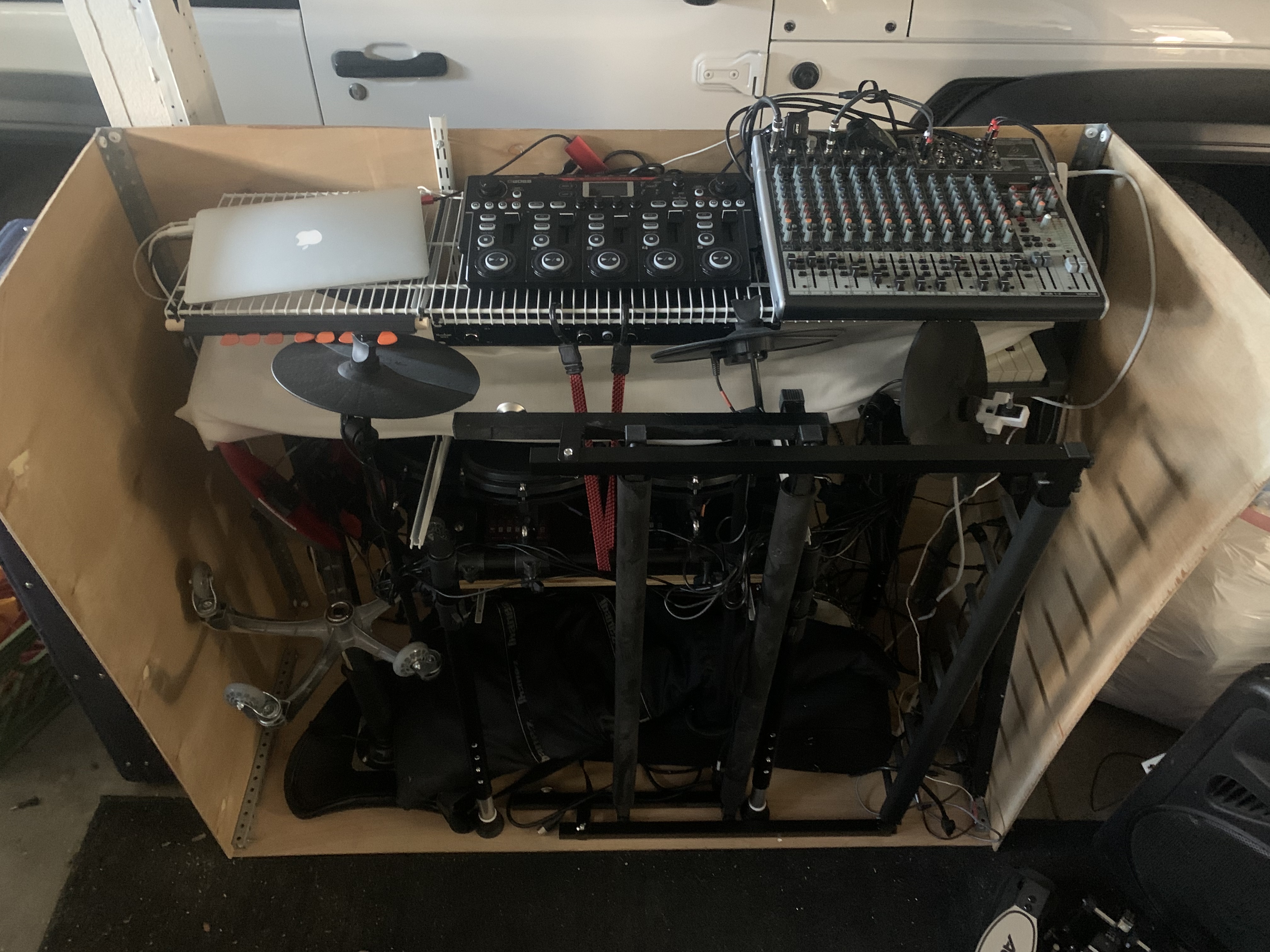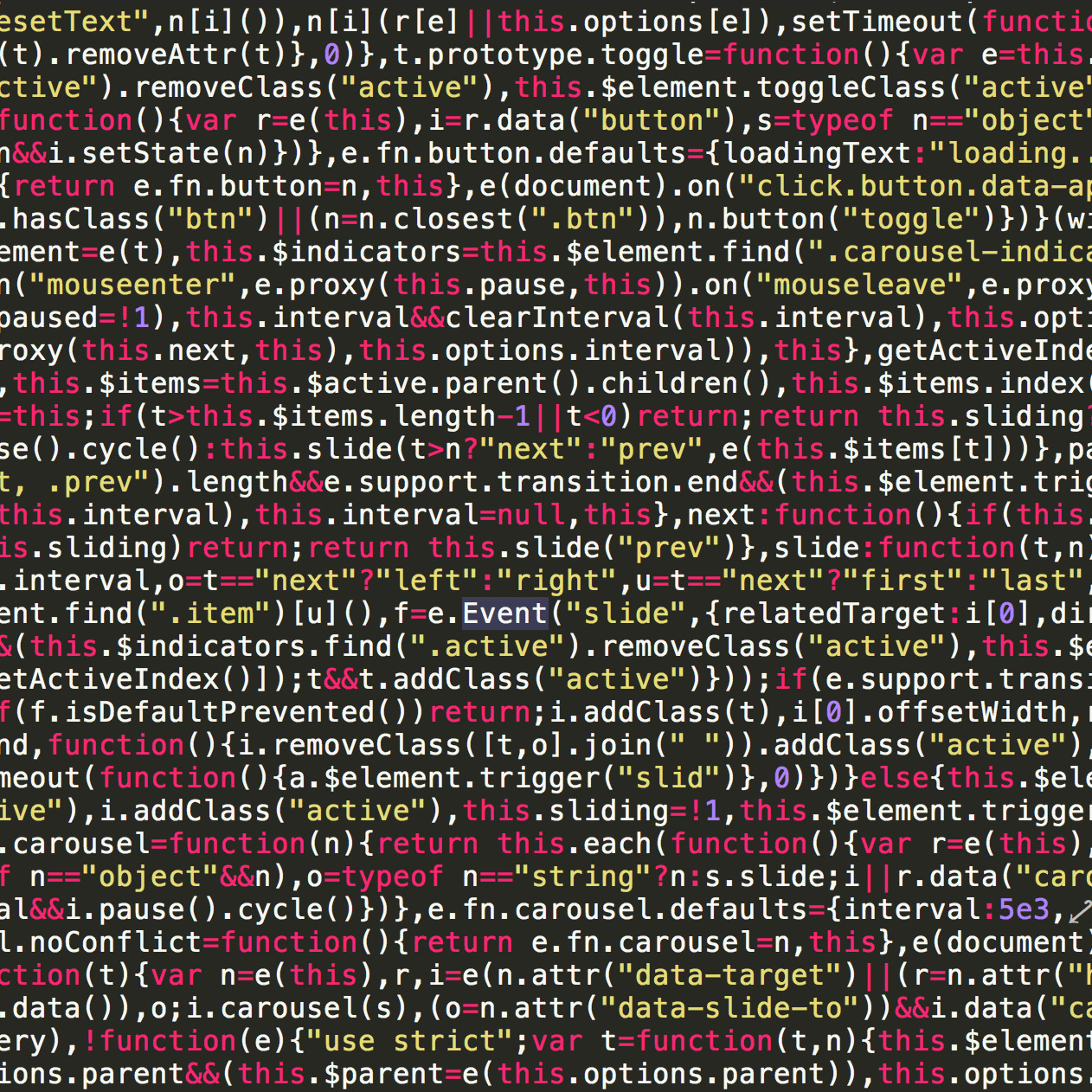The LAMP Stack :: A Short Explanation

...which will probably run long. FYI. A friend at work asked me recently if I could write a blog post with an explanation of the LAMP stack in computer programming. So I doodled a drawing of three of the four mascots (because the first is a feather and didn't fit the tough-guy cartoon) and away we go:
I originally subtitled this blog post "A Short Explanation", but as I'm writing it, I see that the first section (Linux) is getting quite long. I am going to surmise here and split it up into different page. So I guess in a matter of speaking, if you're just mildly curious, you can read the summation below. If not, you can use the links here or at the bottom to continue into further explanation.
L is for Linux (that's good enough for me)
Linux, briefly put, is the operating system that the computer starts up (or boots) with. It is comparable to Windows or Mac on other "normal" computers. Linux is more of a hands on operating system that for some programs are not a simple click-and-go, which probably impedes its popularity in the main stream. In short, it is what is between the computer programs that you interact with, and the actual hardware pieces inside that metal box like the hard drive, memory and CPU (central processing unit). Click here to get way more in depth
A is for Apache (that too is good enough for me)
Apache is a software program that is called a web server. It is the program that gives out, or serves data from inside the computer out to the world. Transversely, it also allows certain data into the computer too. There are many different web servers to choose from, but Apache is the most used web server with Windows servers being a close second. Surprisingly at the time of writing this, according to this Windows servers actually surpassed Apache for a very short time. I did not know that. Click here to get way more in depth
M is for MySQL (that's good enough for me)
MySQL, for the love of all the oysters in the bay, is pronounced "MY ES CUE EL" is a popular database package used by many. There are plenty of other database choices and I will go through a few of the examples and what I think about them. SQL stands for "Structured Query Language" which is a standard (that varies very little between database and computer platforms). I'll go into more about how and why it's not pronounced "my sequel". Like you made a continuation of a movie of yourself. You, Part II. Click here to get way more in depth
P is for PHP (that's good enough for me)
PHP is the open source programming language of choice amongst a vast and growing numbers of programmers and business around the whole world. There's quite a bit to say about this ever-changing language. I'm writing this right at the advent of PHP version 7 which is actually supposed to make PHP process quite a bit faster. Click here to get way more in depth
Comments
Categories
- Stupid Stories 64
- On My Commute 31
- Computer Programming 21
- Italian Dual Citizenship 11
- Food 8
- Black Lives Do Matter 8
- The Beast 6
- Quick Projects 5
- Playing Out 5
- Not So Stupid Stories 5
- Movies I've Made 4
- Scams 3
- Old Man Rants 2
- Making Movies 2
- Programming Tutorials 2
- The Robot Sbot 2
- Film Projects 2
- Rental Car Reviews 1
- Other's Music 1
- 3D Printing 1
- My Original Music 1
- Ryvid Anthem 1










